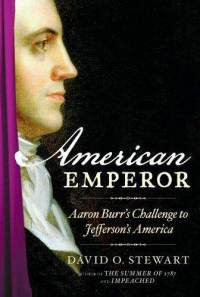 The New-York Historical Society is displaying Mort Kunstler’s “Washington’s Crossing at McKonkey’s Ferry” until January 17, 2012. Emanuel Leutze’s 1851 painting “Washington Crossing the Delaware” commemorates General George Washington’s crossing of the Delaware River on December 25 in 1776 during the American Revolutionary War. His original painting is part of the permanent collection at the Metropolitan Museum of Art.
The New-York Historical Society is displaying Mort Kunstler’s “Washington’s Crossing at McKonkey’s Ferry” until January 17, 2012. Emanuel Leutze’s 1851 painting “Washington Crossing the Delaware” commemorates General George Washington’s crossing of the Delaware River on December 25 in 1776 during the American Revolutionary War. His original painting is part of the permanent collection at the Metropolitan Museum of Art.
Mort Kunstler, a New York artist known for his historical paintings, has created what he considers a more historically accurate version of Washington crossing the Delaware River. The painting was unveiled at the New-York Historical Society on Monday, December 26, the date in 1776 that Washington led his troops into battle in Trenton after crossing the Delaware.
David Hackett Fischer, author of the Pulitzer Prize-winning book Washington’s Crossing, and featured speaker at the unveiling, says Kunstler’s version is “quite accurate” and “got more right than any other image.”
 The original painting shows the Betsy Ross flag flying, however that flag was not adopted until 1777- Mr. Kunstler’s version has no flag. The original painting depicts the action taking place in the middle of the day, though the actual crossing took place during a stormy night. Based on historical research, the new painting shows Washington and company in a flat-bottomed ferry boat rather than on a row boat.
The original painting shows the Betsy Ross flag flying, however that flag was not adopted until 1777- Mr. Kunstler’s version has no flag. The original painting depicts the action taking place in the middle of the day, though the actual crossing took place during a stormy night. Based on historical research, the new painting shows Washington and company in a flat-bottomed ferry boat rather than on a row boat.
On that last detail however, there has been some debate. Rick Spilman, writing in the Old Salt Blog, noted:
“The problem is that most historians think that the American crossing of the Delaware used Durham boats, large flat-bottomed boats which hauled cargo such as ore, pig-iron, timber, and produce from upcountry mines, forests and farms down the Delaware River to Philadelphia’s thriving markets and port. Robert Durham, an engineer at the Durham Iron Works in Reiglesville, Pennsylvania, reputedly designed a prototype for these large cargo boats as early as 1757. Washington wrote to Governor Livingston of New Jersey, directing him to secure “Boats and Craft, all along the Delaware side…particularly the Durham Boats” for his anticipated crossing.”
In any event, you’ll have just one day to compare the two paintings first hand. The newly restored Luetze painting will be unveiled in a new frame in the New American Wing Galleries for Paintings, Sculpture and Decorative Arts at the Metropolitan Museum on January 16, the day before the new Kunstler painting comes down at the New-York Historical Society.
Illustrations: Above, Mort Kunstler’s “Washington’s Crossing at McKonkey’s Ferry”- below, Emanuel Leutze’s 1851 “Washington Crossing the Delaware”.
 Little known are the attacks on Forts Montgomery and Clinton on October 6, 1777. Even less known is the fact that the assault was a multinational effort involving German and Scottish troops, and a Polish nobleman.
Little known are the attacks on Forts Montgomery and Clinton on October 6, 1777. Even less known is the fact that the assault was a multinational effort involving German and Scottish troops, and a Polish nobleman.






